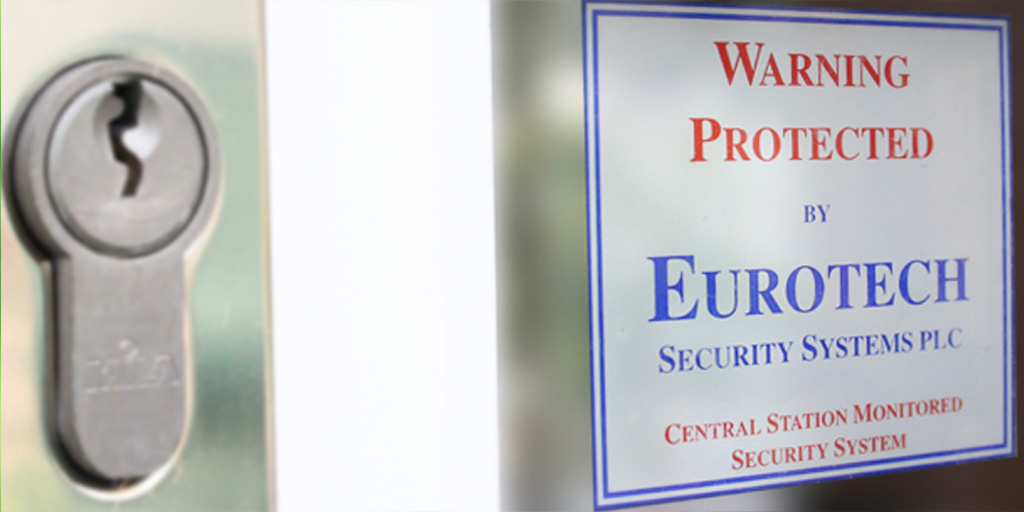3 Most Likely Causes of Home Break-ins
–
The trends in home break-ins can give residents good insight into the ways criminals target a home. What about a home is likely to attract the attention of a thief? What is really causing these break-ins? Through understanding the reasons a home break-in happens, you can determine what you can change about your home security to better protect your property.
1. Crimes of Opportunity
The basic thief does no planning before they commit a crime. They act solely based on some simple criteria. Often they are looking for a home that they can interact with a perimeter door without being seen. An abandoned street, no security cameras, a high fence, and an easy to access backdoor, can draw the attention of the criminal.
Criminals are just looking to see if they can try to break in without anyone noticing. Often they will check to see if someone is home before trying to gain entry into the home. This type of criminal can be dispatched with basic methods you would use to deter burglars. As long as your home is not entirely unprotected, you will not have to worry about this type of criminal.
One of the easiest ways to avoid a crime of opportunity is to simply lock your doors. Many criminals will just go to a home and check all the doors. If one is open, they will go in. If the home is truly deserted, they might be fine making more noise by trying to break a window or kick in the door.
Avoiding this type of break-in comes down to the old adage about surviving a bear attack. As it is said, you do not need to outrun the bear chasing you. You only have to outrun the person standing next to you. Your home security does not need to be impenetrable, but it does need to be better than the homes around yours.
2. Perceived Value
One of the most dangerous causes of home break-ins is when a criminal believes there is something worth stealing in a home. This means that a criminal is going to try and find the best way into your home. If you have cameras, high-security locks, and an alarm, they will look for the best way to circumvent your protections even if you have followed the common advice for preventing home break-ins.
A thief might stake out your home. Based on how much money they think they have the potential to steal, they may even invest in specific equipment to overcome your particular security measures. But in most cases when a criminal believes you have something worth stealing, they will just try and find the easiest way to break in. Most people can prevent theft even when they are being personally targeted by asking themselves, “How would I break in if I locked myself out of my house?”
Often, homeowners will find it difficult to think like a criminal, but thinking about their security from the basis of lawful entry can be very helpful for this type of thought experiment. It is unlikely that you will get the attention of thieves that are experienced with lock picking or other methods of entry the common man would be able to perform without practice or training.
You can prevent this break-in cause by keeping valuables obscured from street view. Do not be flashy with jewellery and be careful about advertising any large purchases on social media. The fewer people who know about the existence of your valuables, the better. Do not talk about any home safes, and do not even hint at their existence. Word can travel quickly from a friend to their acquaintance, and before you know it a stranger knows about you and your property.
3. Targeted Vulnerabilities
This is somewhat similar to a crime of opportunity, but it is more difficult to anticipate. If you have a habit of leaving your door unlocked or live a mile from any other house, you can tell that you are vulnerable. The targeted vulnerabilities of certain criminals are based more on bypassing something you believe is secure.
For example, many people believe their garage door security is perfectly suitable if you need a remote to open it. But most motorised garage doors have an emergency release latch on the interior of the garage. A criminal can use a long reach tool to pull it, and then the garage is open. With many euro cylinder deadbolts, there is the risk of snapping, but even with a high-security anti-snap lock, installing a thumb turn on one side can make the entire lock insecure.
The point is that a criminal is looking for a vulnerability that they have tools and experience with. They go around a neighborhood and only approach houses that have security with the specific vulnerability they are skilled at exploiting. Keep up to date with burglary trends and crime statistics to know what criminals are targeting. Make sure to adapt your home security as weaknesses become exposed.
Author Bio
Ralph Goodman is a security expert and lead writer for the Lock Blog, the #1 locksmith blog on the Internet. The Lock Blog is a great resource to learn about locks, safety, and security. They offer tips, advice and how-to’s for consumers, homeowners, locksmiths, and security professionals. Ralph has been featured widely throughout the web on sites such as Business Insider, Zillow, Bluetooth, Apartments.com, CIO, and Safewise.

